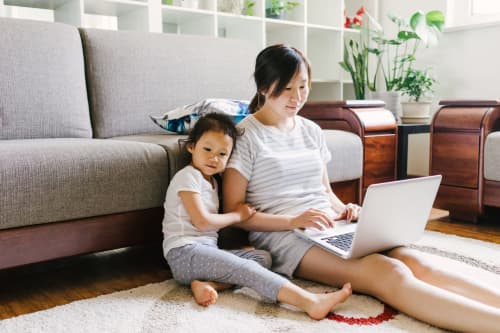
The 20-20-20 Rule And Other Ways to Beat Eye Strain

These days, we’re pretty much always looking at a screen. According to the most recent Nielsen report, as of 2018 American adults spend over eight and a half hours per day viewing some sort of digital media. Many of us stare at computers all day for work, and/or stare at our TV or computer to relax when we get home. We’re often glancing at our phones. You’re even looking at a screen right now.
And all this screen time has some eye-boggling effects, known as Computer Vision Syndrome, or Digital Eye Strain. Symptoms include eye strain, headaches, blurred vision, dry eyes, light sensitivity, or even pain in the neck and shoulders.
So what causes this? Well, one factor is a lack of blinking. When we stare at a screen, not only do we blink less often than normal, but when we do blink we don’t always close our eyes completely. Another issue is that the bright blue light coming from our screens can cause eyestrain due to blue light-sensitive molecules in the retina.
Luckily, there are a few easy ways to combat the effects of eye strain:
- The 20-20-20 Rule: Every 20 minutes, you should look at an object at least 20 feet away for at least 20 seconds. It takes 20 seconds for your eyes to fully relax, so this helps them rest from the strain of constantly staring at a screen. Obviously more rest is good for your eyes, so taking a 15-minute screen break every 2 hours will also help reduce eye strain.
- Organize Your Computer Space: Your computer screen should be at least an arm’s length away from your face, ideally slightly below eye level. A matte screen filter will help you avoid glare. And as your parents always told you, don’t have the screen be the only light in a dark room; the high contrast between light sources adds to your eye strain.
- Deal With Dry Eyes: Closing your eyes for a few seconds on a regular basis will help them re-hydrate naturally, as will drinking more water. A humidifier can also help prevent dry eyes. If you try all of this and still suffer from dry eyes, you may need to try artificial tears.
- Beat The Blue Light: The easiest way to deal with this is simply to tell your device to do it for you. Many devices now ship with an automatic way to regulate the light coming out of your screen so it adapts to the time of day and won't keep you up at night. If you have Windows 10, just right-click on your desktop, select Display Settings, and you’ll see a “Night Light” setting. If you have an iPhone, you can go to Settings -> Display & Brightness -> “Night Shift”
If your device doesn’t come with a pre-installed solution, you can download a program that will do the same thing, such as f.lux.
And on the off chance you don’t have the permissions to install such programs on your computer, you can always buy a pair of blue light blocking glasses. You can get an inexpensive pair on Amazon, or more fashionable ones from companies like Felix Gray or from your eye doctor.
